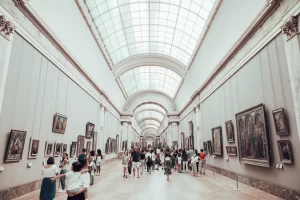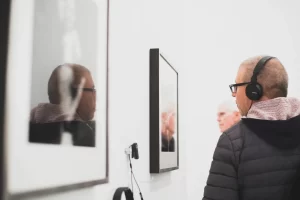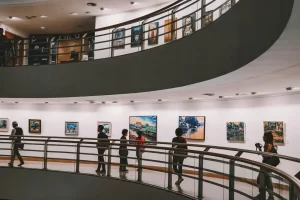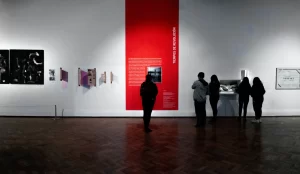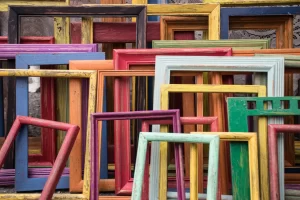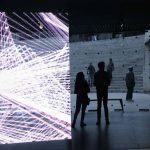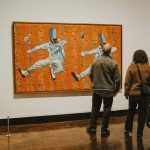Introduction to Artwork Collection Showcases
Unveiling the Art: Exploring the Significance and Methods of Artwork Collection Showcases
Artwork collections, both private and public, stand as captivating tapestries woven with cultural significance, reflecting the richness of artistic expression across time. This article delves into the growing trend of showcasing these collections and aims to unravel the importance and diverse methods employed in publicly displaying art.
At the heart of the art world, both private and public artwork collections serve as captivating tapestries, weaving narratives of cultural significance that echo the evolution of artistic expression throughout history. This article seeks to delve into the surging trend of putting these collections on public display, unraveling the profound importance and the diverse methods employed in sharing these artistic treasures with a broader audience.
Introduction
In a world pulsating with creativity, the exhibition of artwork collections has become more than a display; it is a cultural phenomenon. From privately curated galleries to expansive public institutions, these showcases serve as portals to diverse artistic realms, sparking conversations and shaping societal perspectives. This article embarks on a journey to unravel the layers of importance and methods employed in presenting art collections to the public.
In the vibrant landscape of a world pulsating with creativity, the exhibition of artwork collections has transcended mere display; it has evolved into a cultural phenomenon. Whether nestled within privately curated galleries or housed in expansive public institutions, these showcases act as portals to diverse artistic realms, sparking meaningful conversations and shaping societal perspectives. This article embarks on a journey to unravel the intricate layers of importance and the myriad methods employed in presenting art collections to the public.
The Importance of Showcasing Art Collections
Public Engagement
The exhibition of art collections acts as a bridge between artists and the public, exposing audiences to a kaleidoscope of styles and movements. This engagement not only stimulates critical thinking but also fosters a deeper appreciation for the role of art in society. It becomes a catalyst for cultural awareness and dialogue, forging connections between diverse communities.
This also serves as a dynamic platform for the celebration of cultural diversity. Through the curated display of artworks, audiences are invited to explore the unique narratives embedded in various pieces, representing different historical periods, regions, and artistic traditions. This celebration of diversity not only enriches the cultural tapestry but also promotes a profound understanding of the interconnectedness of humanity. It encourages viewers to embrace perspectives different from their own, fostering a sense of empathy and unity as they navigate the vast array of artistic expressions. In this way, art exhibitions become not only showcases of creativity but also vibrant spaces for cultural exchange and mutual respect.
Preservation and Legacy Building
Beyond the allure of the immediate, showcasing art collections plays a crucial role in preserving cultural treasures for future generations. These exhibits offer a controlled environment, ensuring the longevity of artworks and contributing to the historical and cultural record. Simultaneously, they elevate the reputation and influence of the collectors or institutions, leaving an indelible mark on the legacy of art.
The preservation of art collections goes beyond the confines of physical spaces, with advancements in technology playing a pivotal role. Many institutions and collectors now employ state-of-the-art conservation techniques, including climate control systems, archival materials, and digital documentation. These measures not only safeguard delicate artworks against environmental factors but also create digital archives that serve as invaluable resources for art historians, researchers, and enthusiasts. The fusion of traditional preservation methods with modern technology ensures that the essence and historical significance of these cultural treasures persist in the face of evolving challenges, securing a rich and enduring legacy for generations to come.
Economic and Social Impact
Art collections showcased to the public are not mere displays; they are economic and social hubs. Generating revenue through ticket sales, merchandise, and related events, these exhibitions become catalysts for job creation in tourism, education, and cultural programming. Furthermore, they breathe life into communities, fostering cultural development and revitalization.
In addition to their economic impact, public art collections serve as powerful engines for social and cultural development. Beyond revenue generated through ticket sales and merchandise, these exhibitions become epicenters for a multitude of related events, ranging from educational programs to cultural festivities. The economic ripple effect extends to job creation, not only within the art institutions themselves but also in the broader hospitality, tourism, and educational sectors. As visitors flock to experience these cultural treasures, local businesses thrive, creating a symbiotic relationship between the arts and the economy.
Methods of Showcasing Art Collections
Physical Exhibitions
From the revered halls of traditional museums to the dynamic settings of pop-up exhibitions, physical showcases continue to provide curated narratives that transport visitors through various artistic epochs. The immersive experience of physically engaging with artworks allows for a deeper connection and appreciation of the pieces. Traveling exhibitions and the utilization of unconventional spaces extend the reach of art, making it a tangible and accessible experience for diverse demographics. These dynamic physical exhibitions serve as cultural touchpoints, enriching communities and fostering a sense of shared heritage.
Digital Platforms
In the contemporary digital age, art effortlessly transcends physical boundaries. Online collections and virtual tours redefine the accessibility of art, providing global audiences with the opportunity to explore curated exhibits from the comfort of their homes. Social media campaigns and interactive features amplify engagement, transforming the passive act of viewing into an active, participatory experience. Collaborative online projects further bridge the gap between artists, curators, and audiences, creating a virtual realm that transcends the limitations of physical space. The fusion of technology and art in the digital landscape opens new frontiers for creativity and audience interaction.
Alternative Showcases
Artistic expression finds unconventional avenues through artist-led initiatives and independent spaces, serving as incubators for avant-garde presentations, educational programs, and workshops. These alternative showcases transform art into a dynamic teaching tool, breaking away from traditional constraints. Interactive experiences, whether blending art with technology or incorporating live performances, redefine the boundaries of traditional exhibitions. These experimental spaces contribute to the evolution of artistic expression, encouraging innovation and pushing the limits of how art is both presented and perceived.
Considerations for Effective Showcases
Curatorial Vision
The backbone of any exhibition lies in a clear curatorial vision. Themes and narratives guide presentations, ensuring accessibility for diverse audiences. The delicate balance between education, engagement, and aesthetic appreciation defines a successful showcase.
A well-crafted curatorial vision acts as the compass that guides the exhibition’s journey, providing a cohesive and meaningful experience for diverse audiences. Themes and narratives carefully woven into the presentation not only enhance the aesthetic appeal of the showcase but also serve as educational tools, inviting viewers to delve deeper into the context and stories behind each piece. This delicate balance between education, engagement, and aesthetic appreciation is the essence of a successful exhibition.
Technology and Presentation
Technology enhances the art experience when judiciously applied. Appropriate lighting, sound design, and visual elements heighten the ambiance without overshadowing the artwork. Accessibility for all visitors, including those with disabilities, remains paramount in creating an inclusive environment.
The judicious application of technologies such as appropriate lighting, sound design, and visual elements can elevate the ambiance, creating an immersive and dynamic environment without overshadowing the focal point—the artwork itself. These technological enhancements aim to complement and amplify the artistic narrative, providing visitors with a richer and more engaging encounter.
Engagement and Education
Effectively showcasing art extends beyond the visual. Educational materials, guided tours, and interactive activities provide context and depth. Talks, workshops, and events involving artists and curators foster dialogue and critical thinking, enriching the overall experience.
The effective showcasing of art extends beyond the visual display of artworks. It involves the creation and integration of educational materials, guided tours, and interactive activities that serve to provide context and depth to the exhibited pieces. These supplementary elements act as windows into the artistic process, historical context, and cultural significance, enhancing the viewer’s understanding and appreciation of the artworks.
Conclusion
In conclusion, the unveiling of art collections to the public is a powerful act, intertwining public engagement, preservation, and cultural impact. As we navigate the diverse methods of showcasing, it is imperative to recognize the dynamic role these exhibitions play in shaping our cultural landscape. Embrace the invitation to explore art collections, participate in the dialogue they inspire, and become an active contributor to the ever-evolving canvas of human expression.
Key Takeaways
| The Importance of Showcasing Art Collections | Methods of Showcasing Art Collections | Considerations for Effective Showcases |
| Fosters public engagement and critical thinking | Physical exhibitions with curated narratives | A clear curatorial vision for thematic guidance |
| Preserves and builds a legacy for future generations | Digital platforms for global access | Appropriate use of technology enhances ambiance |
| Generates economic and social impact | Alternative showcases for unconventional presentations | Education and engagement go beyond visual appeal |
Frequently Asked Questions
Why is it important to showcase art collections to the public?
Showcasing art collections to the public fosters engagement, preserves cultural heritage, and has economic and social impacts on communities.
What are some unconventional methods of showcasing art?
Artist-led initiatives, independent spaces, and interactive experiences blending art with technology or performance are examples of alternative showcases.
How can technology be effectively integrated into art exhibitions?
Technology should enhance, not overshadow, the artwork. Lighting, sound design, and visual elements can be used judiciously to create a richer experience.
What considerations should be taken for curating an effective art exhibition?
Curators should develop a clear theme, prioritize accessibility for diverse audiences, and strike a balance between education, engagement, and aesthetic appreciation.


